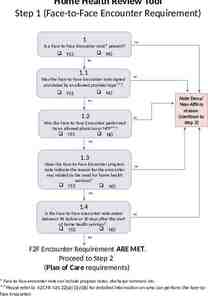Standard Org Chart and Role Descriptions Introduction This job
15 Slides1.79 MB
Standard Org Chart and Role Descriptions Introduction This job aid supports completion of the Human Resources Plan section of a Project Plan, which calls for an organization chart and role descriptions for different team members. If you are writing a Project Plan, this job aid provides some materials to get you started. The generic organization chart can be your starting point – just customize the organization chart to reflect the size and structure of your project Like the organization chart, the role descriptions provided here can be customized to develop role descriptions for project team members If you are unfamiliar with Project Sponsors, Steering Committees, Advisory Committees, and Project Management Offices, some introductory information is provided for basic orientation 1
Standard Organization Chart for a Project (Insert Name) Project Sponsor Advisory Committee (Insert Member Names or Titles and Orgs) Steering Committee (Insert Member Names or Titles) (Insert Name) Project Manager Project Management Office (Insert Name of Team) (Insert Name of Team) (Insert Name) PMO Lead (Insert Name) Team Lead (Insert Name) Team Lead (Insert Name) Administrative Assistant (Insert Name) Team Member (Insert Name) Team Member (Insert Name) Team Member (Insert Name) Team Member 2
Example Organization Chart for a Project Advisory Committee Mr. R Al-Muhannadi, MOH Mr. S Al Rashed, MOI Ms. T Al-Sada, SEC Mr. H Al-Rumaihi, SCFA Mr. S AlAmmar, MOF Shiekh Faisal Al-Thani Secretary General Project Sponsor Steering Committee Dr. M Al-Asiri, Director of Finance Ms. A Al-Qadi, Director of HR Mr. H Al-Humaidi, Director of IT Mr. K Al-Mannai, Director of Policy Dr. Nawal Al-Taweel Project Manager Project Management Office Design Team Research Team Mr. Rashed Al-Ammari PMO Lead Ms. Hind Al-Naama Design Team Lead Dr. Hamad Al-Kulfi Research Team Lead Mrs. Hanna Gahl Administrative Assistant Ms. Sarah Al-Malki Team Member Mr. Jabor Al-Kuwari Researcher Mr. Ali Al-Kaabi Team Member Mr. Mohammed Al-Qadi Researcher 3
Sponsor Sponsor Background: The Project Sponsor is the manager or executive within an organization who oversees a project and delegates authority to the Project Manager. Sponsor Characteristics: Generally provides the project budget Has sufficient authority to direct all the staff involved in a project – or as many as possible Has sufficient authority or influence to get the cooperation of key stakeholders Sponsor Role Description: Approves Plan, Schedule, and Budget Ensures project is aligned with organizational strategy and compliant with policy Ensures project makes good use of assets Maintains project focus on its goal and outcomes Verifies project progress against its Plan Monitors effectiveness of Project Manager Chairs the Steering Committee Approves final deliverables Removes any roadblocks to project success Approves significant changes to the project scope, timeline, budget, or quality Communicates about the project inside the agency and with external stakeholders 4
Steering Committee Steering Committee: Steering Committee Role Description: A group of senior managers responsible for business issues affecting the project Ensures project is aligned with organizational strategy and compliant with policy They may: Ensures project makes good use of assets Have budget approval authority Assist with resolving strategic level issues and risks Make decisions about changes in goals and scope Approve or reject changes to the project with a high impact on timelines and budget Be the highest authority to resolve issues or disputes Assess project progress and report on project to senior management and higher authorities Provide advice and guidance on business issues facing the project Use influence and authority to assist the project in achieving its outcomes Review and approve final project deliverables 5
How do Sponsors and Steering Committees “Govern” Projects? What is Governance? Oversight to ensure that Directors and Managers Act in the interests of the organization Are accountable for their use of assets How is project governance carried out? Review project documents, such as Plans and Status Reports, looking for evidence that the project is in the interests of the organization and uses assets responsibly In discussions and decisions, advocate for what you believe is best for the organization and its stakeholders Require that the Project Manager and team demonstrate competence, ethics, and compliance with organizational policy Who can govern a project? Senior manager of the funding organization as a SPONSOR Senior mangers of the funding organization or stakeholder representatives as STEERING COMMTITEE MEMBERS Who cannot govern a project? Project Manager or other team member They will not be seen as objective judges of their own work and conduct 6
Advisory Committee Advisory Committee Background An Advisory Committee is a group of people who represent key project stakeholders and provide advice to the Project. Like Steering Committees, Advisory Committees are generally made up of Managers – often quite senior ones. Unlike Steering Committees, Advisory Committees do not make decisions regarding a project. Advisory Committee Role Provide insights to the team regarding Stakeholder interests Technical advice Other relevant initiatives Assist with resolving issues and risks Use influence and authority to assist the project in achieving its outcomes Communicate about the project in their organizations 7
Role of a Project Manager Project Manager Background Project Manager Role Description Project Managers have overall responsibility for meeting project requirements within the agreed to time, cost, scope and quality constraints outlined in the Project Plan. Supervise and provide technical direction to project team Project Managers report to Project Sponsors, who have delegated their authority to the Project Manager. Provide weekly Project Status Reports to the Project Sponsor Chair Advisory Committee meetings Chair weekly team status meetings Chair Risk and Change Control Committees (if these exist for a project) Attend Steering Committee meetings and prepare supporting materials with the Project Sponsor (agendas, presentations) Execute project management processes: risk, issues, change, quality, and document management Ensure Project Plan, Schedule, and Budget are upto-date; detect and manage variances 8
Team Lead Team Lead Background A Team Lead is a person responsible for managing one part of a project, or a “subproject.” This position only exists on larger projects. Team Leads ideally have project management skills, including human resource management, in addition to relevant technical skills. Team Lead Role Description Supervise and provide technical direction to subteam members Review all sub-team deliverables Hold regular sub-team status meetings Provide regular status reports to Project Manager Attend Team Lead meetings and Project Status Meetings Manage and resolve team-level risks, issues, and changes Ensure team is using the project management processes outlined by the PMO in its Process Plans 9
Team Member Team Member Background A person assigned to a team who is responsible for performing some of the project activities. Team members may: Report directly or indirectly to the project manager Be assigned to work part-time or full-time on the project Team Member Role Description In your role description for a team members, list the: Major activities they will do Deliverables they will produce You can list other responsibilities and expectations, such as: Attendance at status meetings or other meetings Compliance with standards Participation in project management processes such as risk, issue, and document management 10
Why are PMOs are Needed on Large Projects? Frees time of Project Manager to focus on Priority risks Priority issues Stakeholder alignment Technical challenges Ensures administrative tasks are completed Projects often have trouble competing for the time of administrative support staff in the permanent organization Brings Subject Matter Experts needed in larger, more complex projects Financial management Human resource management 11
A PMO Can Have Two Roles A PMO can have two roles: (i) project management support and (ii) administration. Every time a PMO is established, it must define its role. Use the lists below as a checklist or menu to choose from when determining the role for your PMO. 1. Project Management Role 2. Administrative Role Support Project Manager by helping: Maintain budget/bookkeeping Mobilize the team (project start up) Write and update PM deliverables: Project Definition Document Project Plan, Schedule, Budget Project Manual Status Reports Manage project management processes: Risk management Issue management Change control Quality management Document management Configuration management Project evaluation Support and track approvals Process expenses Arrange travel Manage facilities Procure supplies and equipment Manage contracts Manage documents – filing project deliverables, meeting minutes, contracts, logs Support status meeting for team, Steering and Advisory Committee – facilities, agenda, minutes Managing HR -- recruiting, orienting, and arranging training for team members, keeping vacation schedules, conducting exit interviews 12
Project Management Office (PMO) Lead PMO Lead Background The PMO Lead supervises the team that provides project management and administrative support to the Project Manager. The PMO should have strong project management technical skills, including the human resources management skills to supervise others working in the PMO effectively. PMO Lead Role Description To construct the PMO Lead role description: Select from the menu of potential PMO responsibilities on the “PMOs Have Two Roles” slide If the PMO has a team working in it, include the responsibilities found in the “Team Leader” slide 13
Other Project Role Descriptions 1 of 2 Project Director Change Control Committee The Project Director reports to the Project Sponsor and supervises the Project Manager. This position is normally held by a senior manager with responsibility for more than one project. A committee responsible for approving or rejecting changes to the Project Plan. It is typically seen on IT projects, and members typically represent program and project management; software and hardware engineering; testing; documentation; customer support; and marketing. It is common to use Project Directors when the Project Manager is an External Consultant. Responsibilities are as follows: Oversee projects and work of Project Manager Ensure integration of project with other projects and organizational priorities Responsibilities are as follows: Review and approve the Change Control Plan Ensure the change control process is executed effectively Review changes and make decisions within the limits of authority (re budget and timeline) Escalate changes to senior management that require decisions above the committee’s level of authority 14
Other Project Role Descriptions 2 of 2 Risk Manager Risk Control Committee The Risk Manager reports either to the Project Manager or PMO Lead and takes responsibility for executing the risk management process for a project. This role is usually only seen on large and sensitive projects. A committee responsible for overseeing and participating in the project’s risk management process. Members should have business knowledge relevant to the project and should represent key stakeholders. Responsibilities are as follows: Responsibilities are as follows: Identifying risks Review and approve the Risk Management Plan Analyzing (quantifying and prioritizing) risks Ensure the Risk Management Plan is executed effectively Planning responses to risks Ensures response plans are executed Documenting and tracking risks Assist with identification of risks Advise on how to respond to risks Writing Contingency Plans Involving the team and external stakeholders in the process as required 15




















